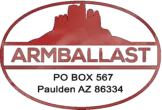Trains can be sorted in several distinct categories, separated by the way their Locomotives engines are powered. Their use, and by the design of their tracks. The following are the types of trains engines on railroads:
STEAM Engine LOCOMOTIVES
The steam locomotive is a self-contained power unit. They consist of a steam engine and a boiler. With fuel and water supplies. Superheated steam, controlled by a throttle. Is admitted to the cylinders by a suitable valve arrangement. The pressures on the pistons being transmitted. The main rod to the driving wheels provides power. The driving wheels, which vary in number. Steam locomotives are usually classified under the Whyte system. That is, by the number and arrangement of the wheels. For example, an engine classified as 2–6–0 has one pair of wheels under the front truck. Three pairs of coupled or driving wheels, and no wheels under the trailing truck. In some cases, the truck wheels of the tender (fuel carrier) are added.

ELECTRIC Engine LOCOMOTIVES
Electric locomotives range from the small type used in factories. To coal mines for local hauling to the large engines used on railroads. Electric locomotives have two or more motors. They get power from overhead wire or from a third rail on one side of the track. Battery locomotives, used only for local haulage. They carry electric storage batteries. They act as their primary source of power. Steep grades use electric locomotives. Plus they run on high traffic density track. Efficient they are not more on most railroads. Because of the cost of electric substations and overhead wires or third rails.
DIESEL Engine LOCOMOTIVES
Diesel-electric locomotives were introduced in the United States in 1924 and have become the most widely used type of locomotive. The modern diesel-electric locomotive is a self-contained, electrically propelled unit. Like the electric locomotive, it has an electric drive. In the form of traction motors driving the axles and controlled with electronic controls. It also has many of the same accessory systems. They are for cooling, lighting, heating, and braking. It differs principally in that it has its own generating station. Instead of being connected to a remote generating station through overhead wires or a third rail. The generating station consists of a large diesel engine coupled to an alternator or generator. That provides the power for the traction motors. These motors drive the driving wheels by means of spur gears.
The ratio of the gearing regulates the hauling power. This increases the maximum speed of the locomotive. Diesel-mechanical locomotives have a direct mechanical link. This consisting of a clutch. Plus a series of gears and shafts between the engine and the wheels. Similar to the transmission in an automobile. Because mechanical drives deliver less power to the wheels. Then electric and diesel-electric systems. Small locomotives use diesel-electric systems. In diesel-hydraulic locomotives, the engine drives a torque converter. In which uses fluids under pressure to transmit. Plus regulates the power to the wheels. Hydraulic drives are little used in the United States. But used in many countries, such as Germany.
SOURCES
https://www.infoplease.com/encyclopedia/science/tech/terms/locomotive/types-of-locomotives
